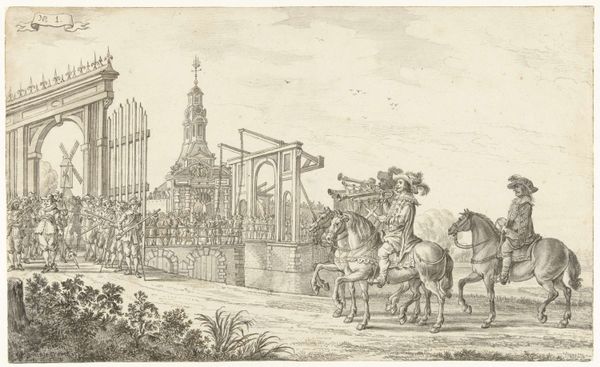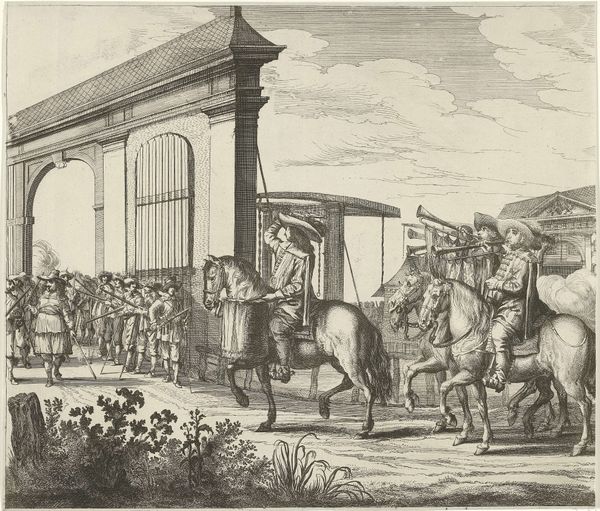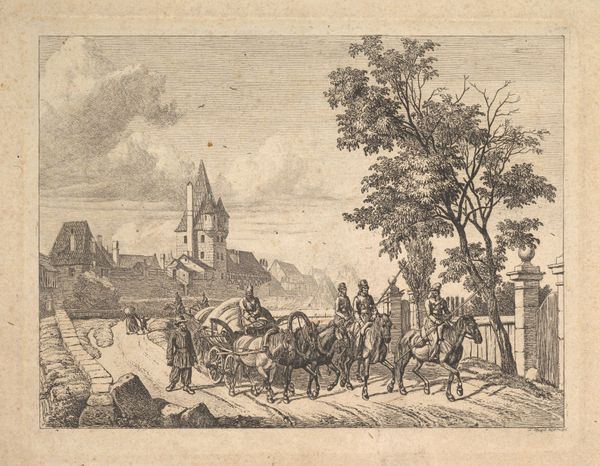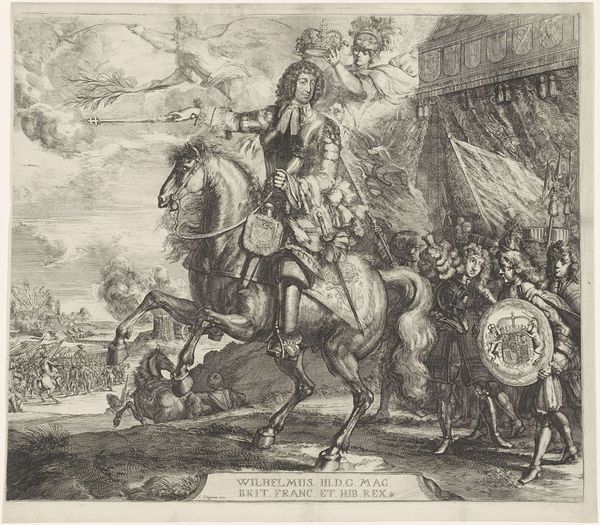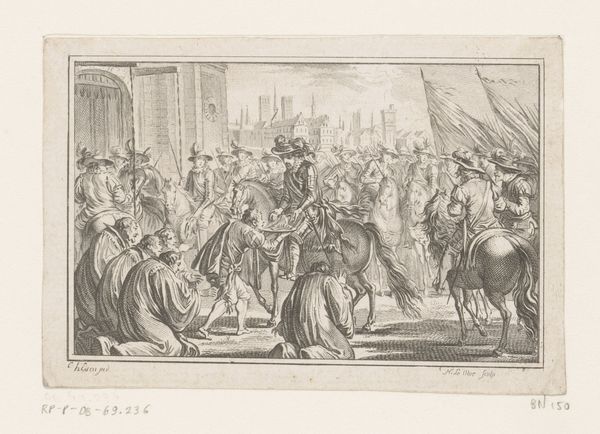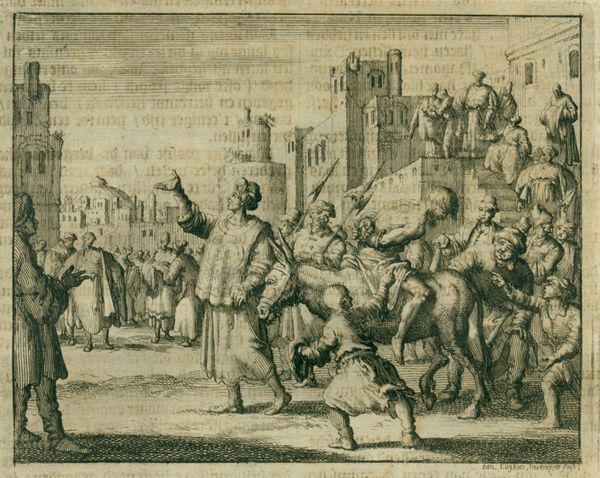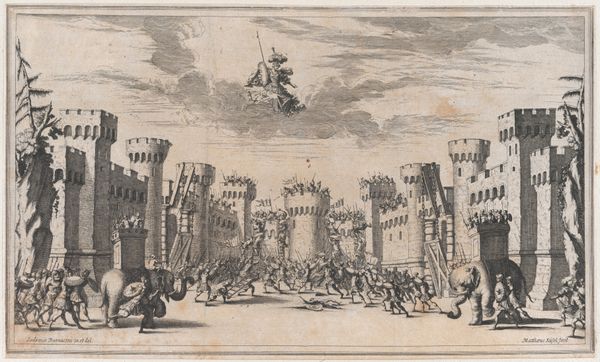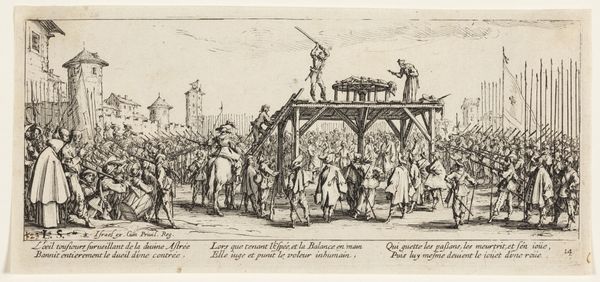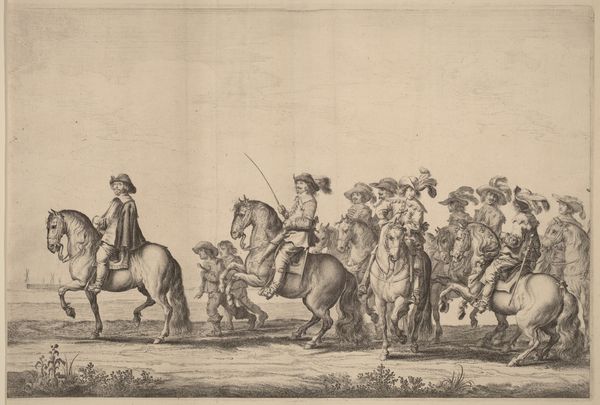![Entry of Marie de Medici into Amsterdam [plate 1 of 6] by Pieter Nolpe](/_next/image?url=https%3A%2F%2Fd2w8kbdekdi1gv.cloudfront.net%2FeyJidWNrZXQiOiAiYXJ0ZXJhLWltYWdlcy1idWNrZXQiLCAia2V5IjogImFydHdvcmtzLzQ0Y2ViYWNlLTE0YjUtNDZlNS04ZDBiLWIxY2I0ZGU0ZjY2MS80NGNlYmFjZS0xNGI1LTQ2ZTUtOGQwYi1iMWNiNGRlNGY2NjFfZnVsbC5qcGciLCAiZWRpdHMiOiB7InJlc2l6ZSI6IHsid2lkdGgiOiAxOTIwLCAiaGVpZ2h0IjogMTkyMCwgImZpdCI6ICJpbnNpZGUifX19&w=3840&q=75)
print, engraving
#
baroque
#
dutch-golden-age
# print
#
old engraving style
#
cityscape
#
history-painting
#
engraving
Copyright: National Gallery of Art: CC0 1.0
Curator: Let’s turn our attention to this print, “Entry of Marie de Medici into Amsterdam,” crafted by Pieter Nolpe in 1639. It’s one plate of a series of six, detailing Marie's ceremonial arrival. What impressions does it stir in you? Editor: Oh, the weight of history, etched right onto the paper! I'm immediately struck by how stiff and formal everyone seems. It's all trumpets and perfect posture, but I wonder what they were really thinking. It’s like a highly choreographed performance where everyone knows their place and plays their part. Curator: That formality is intrinsic to Baroque art, emphasizing spectacle and power. Consider the choice of an engraving. The medium lends itself to crisp detail, reinforcing the intended message of control and grandeur. And the cityscape teems with significance. Editor: The composition is quite compelling. The approaching procession, flanked by that elaborate gate and distant windmill, creates this wonderful sense of depth. It also positions the viewer as being part of this event, drawing you into this unfolding historical narrative. Do you feel, too, like a face in the crowd? Curator: Precisely. The triumphal arch mirrors Roman precedents, invoking associations with imperial authority. The architecture, from the meticulous detail of the church spire to the drawbridge, asserts Amsterdam’s strength and order, the solid burgher establishment. Editor: It's amazing how much visual storytelling Nolpe crams into one image, like reading a historic headline. What strikes me is this slightly absurd contrast, this regal entry set against what appears to be just a regular bustling city. Royalty among the mundane! It injects, in my mind, humanity into this otherwise imposing ceremonial. Curator: Perhaps, indeed. Nolpe captures not only a record of a state event but a convergence of ambition, expectation, and the ever-present undertones of ordinary life going on regardless. This, perhaps, underscores the cultural memory attached to historical subjects such as these. Editor: I'm glad we lingered here. It's a reminder that every formal procession contains multitudes: the official story, the personal dramas, and the everyday world continuing its own course around it all.
Comments
No comments
Be the first to comment and join the conversation on the ultimate creative platform.

